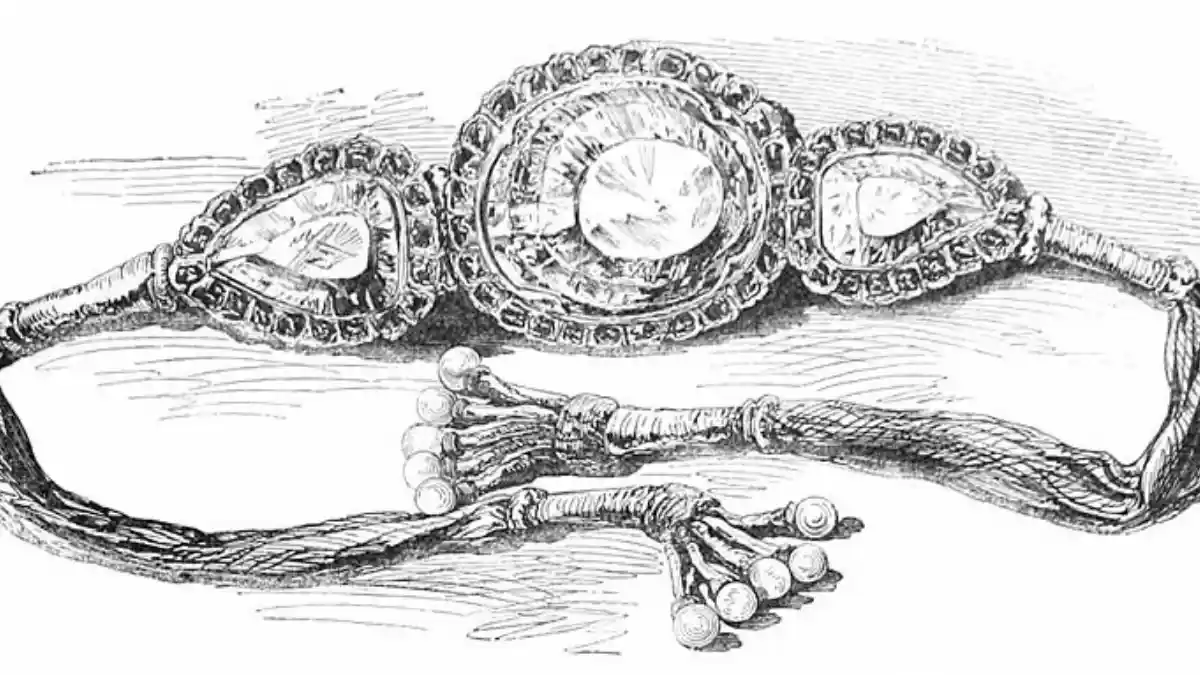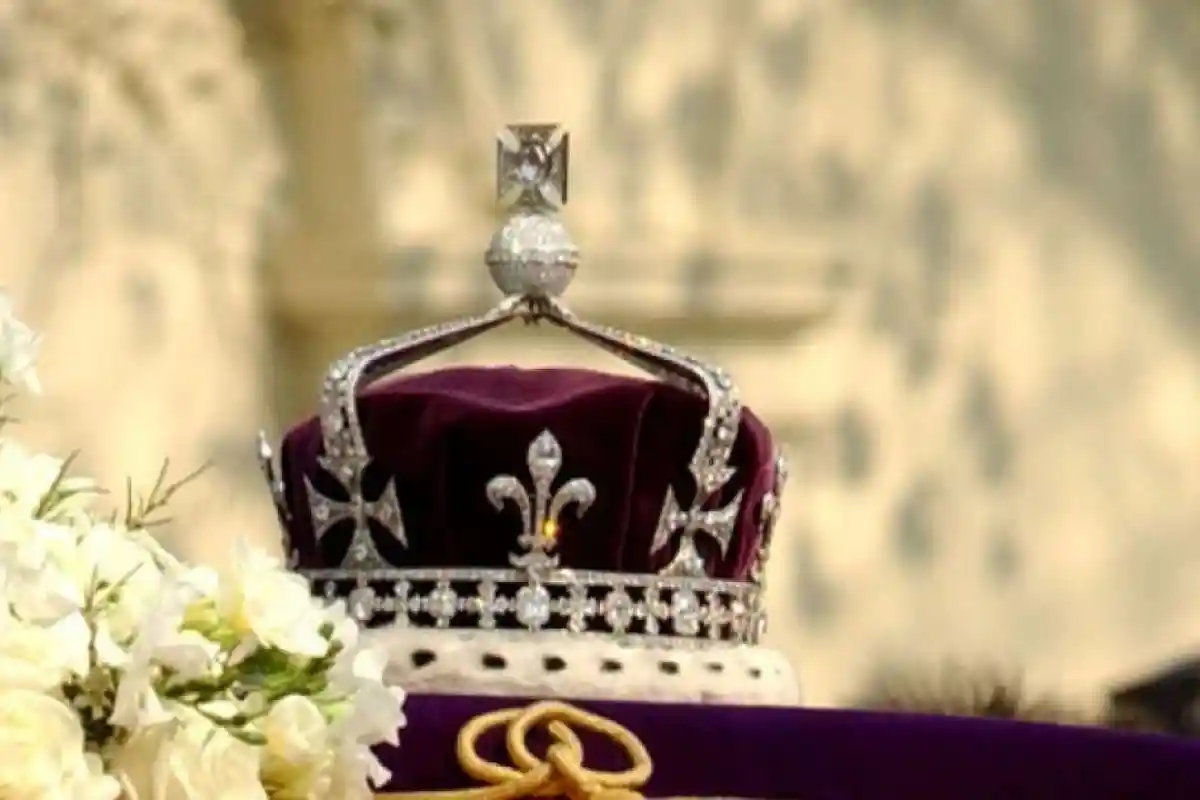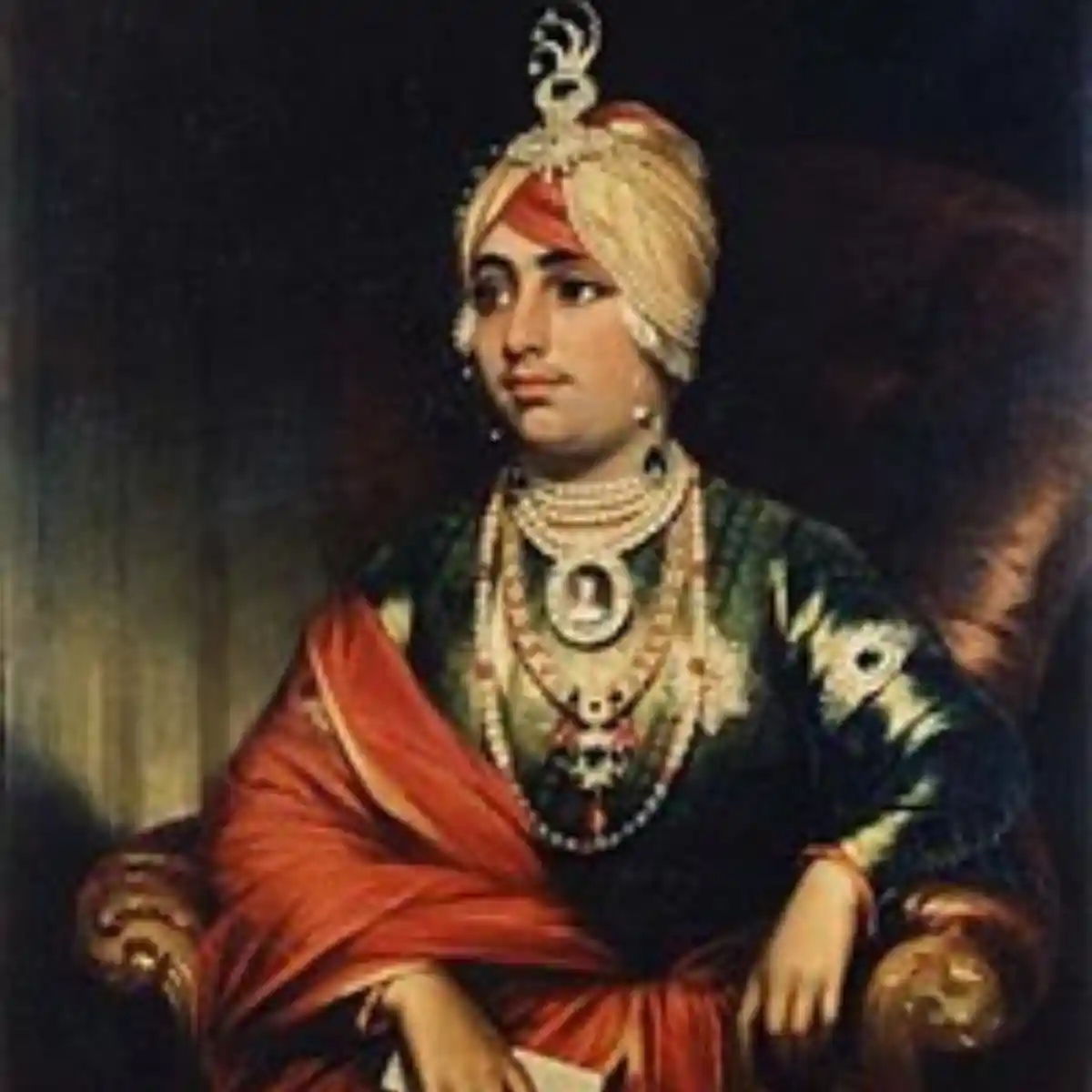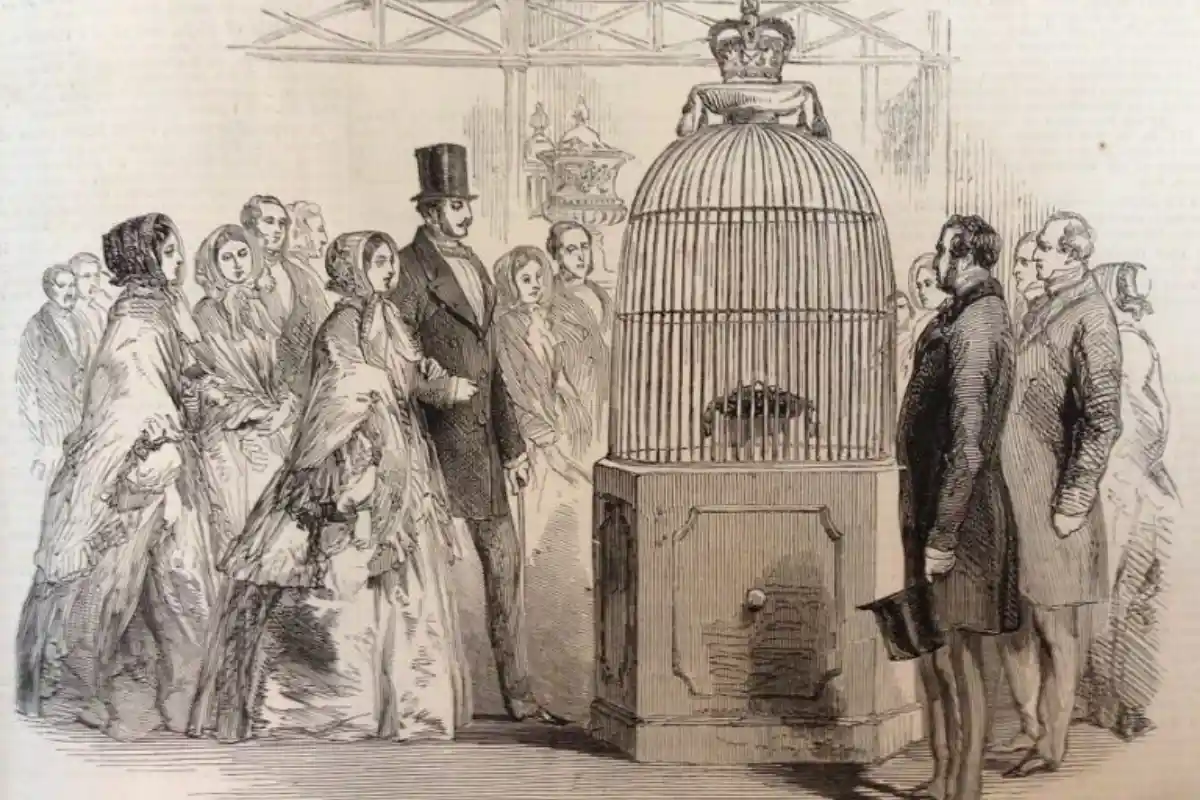Koh i Noor: The Jewel of the British Crown
The trail of tragedy, greed, and bloodshed caused by Koh-i-Noor ends on its final destination in the British heartland. But how did this happen? Let us embark on this journey to discover how the diamond was into adopted English tastes.

The Koh-i-Noor encrusted in an armlet by Ranjit Singh which became an heirloom; Image Source - Wikimedia Commons
Kharak Singh was the next in line to inherit the Sikh Empire. The only trouble was the possibility of losing the Koh-i-Noor because of the pandits. This is where the British administration comes in, offering to become friends while introducing favourable inheritance rights to attract Kharak Singh.
In the meantime, Misr Beli Ram (Ranjit Singh's servant) hid the Koh-i-Noor, siding with the other party in the debate of its possession. With Kharak Singh's installation on the throne, Beli Ram eases on the decision to hand it over to its rightful heir.
Kharak Singh was not the king Punjab dreamed of, and as a result, conspiracies to overthrow him brewed consistently. His body gave up after succumbing to the slow poisoning for 6 months. His eighteen-year-old son, Nau Nihal Singh, was a much-appreciated king. He was sadly subjected to a similar fate and died soon after. Punjab was mourning the loss of yet another king in a short span of three years.
After the quick succession and death of the next king, Sher Singh, the Sikh Empire was left at the disposal of a five-year-old boy king, Duleep Singh.
The need to anglicize Koh-i-Noor became apparent after the lukewarm response of the Great Exhibition. It was the only hope for Prince Albert to win the hearts of Britons. That left them with the only solution of cutting the Koh-i-Noor to make it naturally refract light. Overcoming the fear of destroying the diamond while reshaping, Queen Victoria and Prince Albert commissioned to re-model the stone.
Koh-i-Noor became unrecognizable and lost significant weight, reducing it to half the original shape. It was, however, received well by the Britons, who now readily embraced the gem as their own. At the same time, Duleep also anglicized himself, converting to Christianity. At 15, he visited London and became the favourite of royalty, including the Queen: all thanks to Duleep's English upbringing.
Over time, Queen Victoria found it safe to expose the Koh-i-Noor to Duleep. Everyone expected Duleep to react angrily on seeing his long-stolen family heirloom. Instead, he stayed calm and promised the jewel to British sovereignty. That is the ultimate stamp of approval Queen Victoria needed to rid the guilt towards Duleep. And that's how Koh-i-Noor made it to the centre of Queen's crown, multiplying its power under the umbrella of British supremacy.
Years went by, and everything had fallen in its place, or so it seemed. When Duleep turned 21, his thoughts drifted towards his real mother. When the British intercepted Duleep's secret letter to contact his mother, they allowed the duo to meet.
Seeing Jindan's withering form, the British administration didn't count her as a threat and even allowed her to stay in London. But rebellion once born can never be suppressed. Jindan started feeding Duleep the stories of his lost kingdom and Koh-i-Noor. Even though Jindan died peacefully, Duleep was left in turmoil.
The durbar hoped to manipulate the child, but his mother, Jindan, stepped in and decided the govern the state on her son's behalf. At the same time, the British flag attempted to infiltrate the borders. Unbeknownst to Jindan, the commander of the army and the vizier of Punjab joined hands with the British during the Anglo-Sikh War, draining the state, and ultimately forcing Duleep to sign the Treaty of Lahore.
Now that the British Raj had found its footing within the Sikh empire, its first move was to separate the mother and child. A young Duleep was thus forced to sign his fate, fortune and future to the British crown. Forging a revised treaty, the British administration now demanded the Koh-i-Noor shamelessly while confiscating the state of Punjab.
From this point on, Koh-i-Noor's fate was intermingled with Duleep Singh, prompting different outcomes. India would forever lose its gem while Punjab would lament over lost sovereignty.
Duleep was trusted in the care of his new guardians, John Login and his wife, Lena. Away from Punjab and the possible turmoil his departure could cause, Duleep went ahead to start a new life. Similarly, Koh-i-Noor too made its journey to British soil.
The Britons greeted Koh-i-Noor with fascination and apprehension. Every newspaper and magazine jumped headfirst into its bloody history and the legendary curse. Furthermore, incidents, like the death of the then Prime Minister Sir Robert Peel, were blamed on the arrival of the cursed Koh-i-Noor.

Kohinoor’s permanent residence in the British Crown; Image Source- DNA

Queen Victoria wearing the Koh-i-Noor in her brooch; Image Source - Wikipedia

The boy king, Duleep Singh; Image Source - Wikipedia

A sketch of Koh-i-Noor at the Great Exhibition; Image Source- Twitter
This was when Duleep's rebel phase began and ultimately drove him to neck-deep debts and an early demise in a quaint hotel of Paris. The news of Duleep's death crushed all hopes Punjab even dared dream. For Koh-i-Noor, it permanently became a jewel of the British crown, strictly passed onto women, given the history of its curse. It was Queen Elizabeth II who refused to wear Koh-i-Noor. The gem now rests at the Jewel House in the Tower of London.
This, however, did not ensure a peaceful retirement for Koh-i-Noor. The contemporary era brings up the question of returning colonial loot, which fuels the modern-day nations, including India, Pakistan and even the Taliban, to claim their rights over the precious stone.


